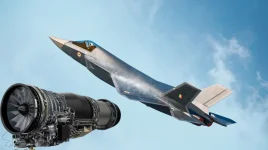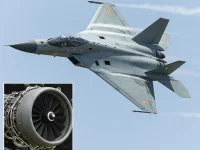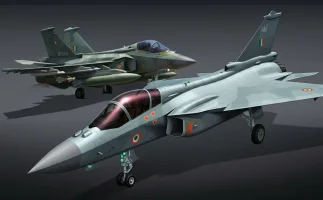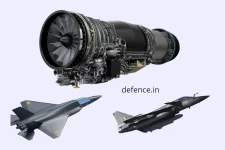- Views: 2K
- Replies: 14
In a significant development for India's indigenous military aviation sector, a powerful new jet engine being co-developed for the fifth-generation Advanced Medium Combat Aircraft (AMCA) is now expected to power the Indian Navy's future carrier-based fighter jet.
The alignment offers a unified, high-performance propulsion solution for the next generation of fighters for both the Indian Air Force and the Navy.
The engine, which will produce 120 kilonewtons (kN) of thrust, is the focus of a major collaboration between France's leading aerospace firm, Safran, and India's Gas Turbine Research Establishment (GTRE), a key laboratory under the Defence Research and Development Organisation (DRDO).
While originally intended for the advanced AMCA Mk2 variant, revised project timelines have positioned this engine as the primary candidate for the Twin-Engine Deck-Based Fighter (TEDBF) program.
Recent assessments have pushed the induction schedule for the TEDBF to approximately 2038. This new timeline, while a delay from initial projections, strategically converges with the production maturity of the new Safran-GTRE engine. This synchronicity presents a unique opportunity to equip the naval fighter with a state-of-the-art, domestically produced engine.
The TEDBF program, managed by the Aeronautical Development Agency (ADA), is critical for India's naval ambitions. It is tasked with developing a modern replacement for the Navy's fleet of Russian-origin MiG-29K aircraft that currently operate from the aircraft carriers INS Vikramaditya and INS Vikrant.
According to officials, the revised timeline stems from the ADA's current focus on completing crucial work for the Tejas Mk1A and the initial AMCA Mk1 demonstrator aircraft.
The agreement to develop the 120 kN engine with France is being pursued under a Government-to-Government (G2G) framework and has been designated a "National Mission Mode Project," indicating the highest level of priority with oversight from the Prime Minister's Office.
This engine will eventually replace the American General Electric GE-F414 engine that is slated to power the initial squadrons of the AMCA, marking a major step in India's goal of self-reliance in critical defence technologies.
The technical specifications of the new engine are an ideal match for the requirements of the TEDBF. The naval fighter is projected to have a maximum take-off weight of around 26 tonnes.
To operate effectively from India's carriers using a Short Take-Off But Arrested Recovery (STOBAR) system, which uses a ski-jump, the aircraft requires a combined thrust of approximately 220-240 kN.
Two of the new 120 kN engines would provide 240 kN of total thrust, perfectly meeting this demand and also providing sufficient power for potential future carriers equipped with catapults (CATOBAR).
Key features of the engine include supercruise capability—the ability to maintain supersonic speeds without using fuel-guzzling afterburners—and a modern modular design for easier maintenance and future upgrades.
While schedule adjustments in complex defence projects can be viewed as setbacks, the delay in the TEDBF timeline has created a valuable strategic alignment.
The Safran-GTRE collaboration is now poised to deliver a single, advanced propulsion system to empower both of India's flagship future combat aircraft, strengthening the nation's sovereign defence manufacturing capabilities for decades to come.





